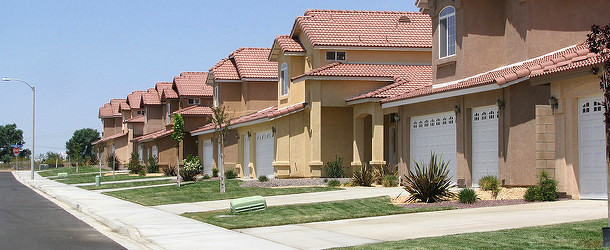
So you’re in the market for a new home, and you’re debating among a variety of different options. Aside from pricing and aesthetics, make sure you consider physical characteristics beyond the house such as the type of lot the subject property sits on.
There are a variety of different real estate lot types, and it’s important to identify and understand the pros and cons of each before purchasing a piece of property.
Aside from lot type, pay special attention to the size of a lot. A larger lot will allow you to build onto the home and make it more valuable, whereas a small lot might have no room for future growth.
Privacy is another huge factor when it comes to a real estate lot. When viewing a property, take a look around. How many neighbors can see into the backyard, the kitchen, the bedroom! Clearly the more privacy the better, and potentially more valuable the home becomes.
Interior Lot
The interior lot is the most common lot type because it “fronts” on only one street. It lies between homes on the left and right side, facing the street with a yard behind the house. This is your basic, standard lot.
As such, there shouldn’t be any major pros and cons to this type of lot from a real estate perspective since its the norm. However, pay close attention to the size of the lot and how close the neighbors are. Also take note of how many homes you can see from the backyard. Lots keep getting smaller to the point where you might be able to see 6-8 other homes from the backyard. And the homes might be so close together that you can reach out and touch the neighbors.
Corner Lot
A corner lot is just how it sounds, a piece of property that lies on the corner of two intersecting streets, causing frontage on two sides of the home. Corner lots allow easier access to the rear of the home, as well as the option for two separate entrances to the home. For this reason, they can draw a premium over standard lots, though this varies depending on other factors such as size, location, and use of lot.
If the corner lot is on a very busy through street the increased traffic could hurt the value, but if it’s a less-traveled, interior street and there are no neighbors on one side of the home, it can be viewed as a positive because it may actually be quieter and more private.
Corner lots may be larger than standard lots, though this isn’t a guarantee. Another potential negative is crime, as corner lots provide easier access to criminals to get in and get out.
Commercial property on corner lots is typically always sold at a premium because of the increased visibility and the potential for easier access to and from the building.
Flag Lot
No, it’s not just a home with a flag proudly flying out front, though it certainly could feature Old Glory flowing in the wind. While a “flag lot” is a more uncommon real estate design, it is still seen in many neighborhoods nationwide.
A flag lot is basically a recessed interior lot with a long extended driveway, which sits above the homes to the left and right.
Try to picture a row of houses with one set far off from the street, with the driveway acting as the flag pole if you will.
The pros of a flag lot are privacy, and potentially a view, with the cons being a long driveway (bad for snow) and decreased visibility to the public. There may even be a shared driveway, which can get touchy at times.
It may turn off some buyers and lead to a lower sales price, though those looking for more privacy and a potential deal may favor it.
Also watch out for properties adjacent to flag lots. They might be able to see into your backyard.
Cul-de-Sac Lot
A cul-de-sac lot is a lot sitting in a cul-de-sac, or a dead-end street with a curved turnaround. The lots lose some of the front yard because of the curved frontage, but enjoy larger backyards, less traffic, and more privacy.
Cul-de-sacs are typically favored because of the perceived safety of the street for children and the larger backyards, meaning you can generally fetch a higher sales price. You’ll often see this type of lot highlighted by the real estate agent as a huge positive.
Key Lot
A key lot is fairly uncommon and exists when a lot has several other homes backing onto the side of the home. If you were to walk along the side of a key lot you’d be able to see two or three of the neighbors’ backyards. In addition, another home may sit directly behind the backyard of a key lot as well, giving it a landlocked feel.
This lot type is seen as a negative because of the decreased privacy and likely reduced visibility. This may hurt its value.
T-Intersection Lot
A T-intersection lot sits at the end of a T-intersection, if you are facing the “T”. The increased exposure to traffic makes these lots less desirable for children and more susceptible to speeding vehicles and bright headlights.
This means the value will likely be lower as fewer buyers will be interested. However, they can sell for a premium if the property is commercial or the owner is looking for increased visibility.
Great post. Accurate, simple and to the point.
Hello,
Regarding “Real Estate Lot Types” post – Simple picture examples would do a much better job. I suggest you upload some good examples or drawings.
Thank you,
Lik
That’s a perfect suggestion
what are the qualification needed to be called an ” Estate Lot” or an “Estate Lot Community”